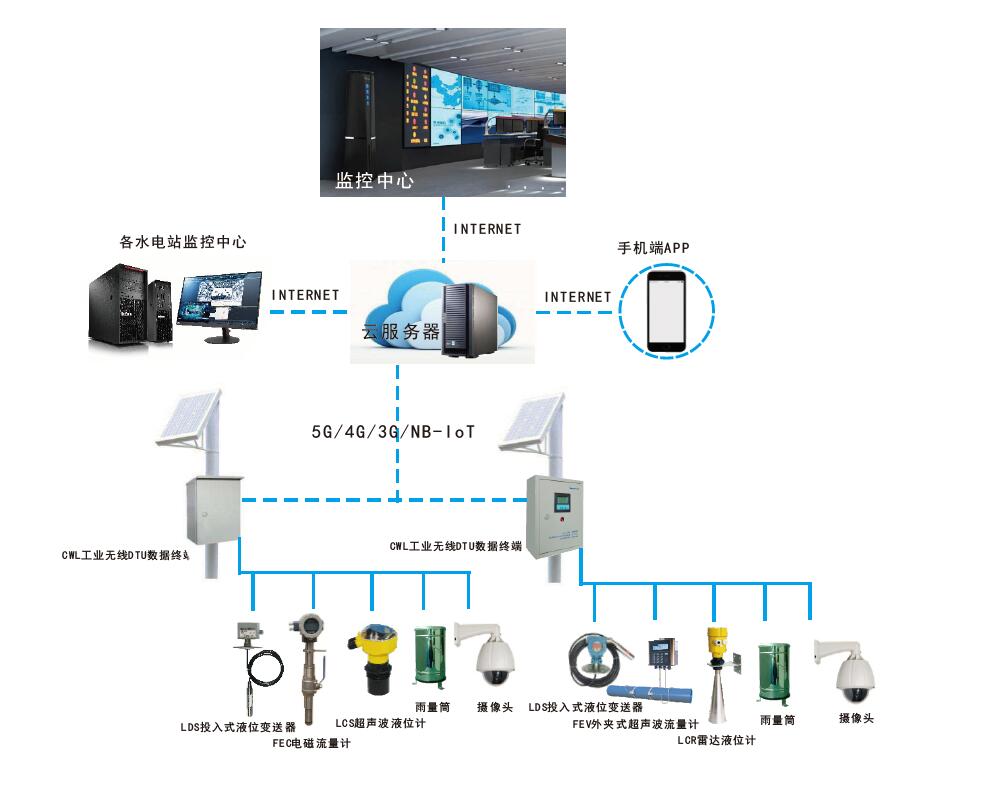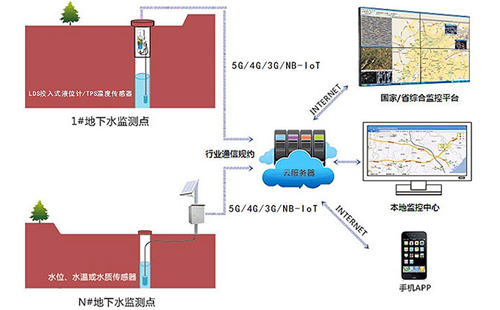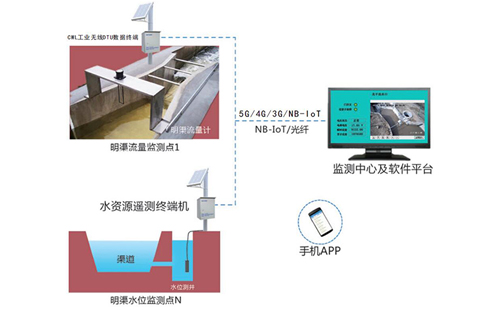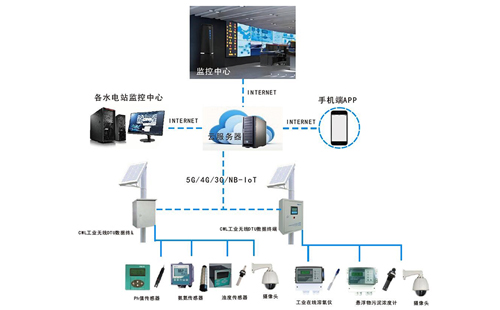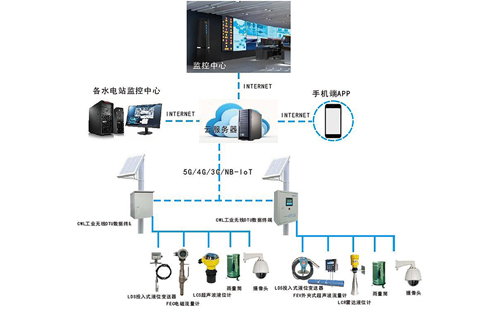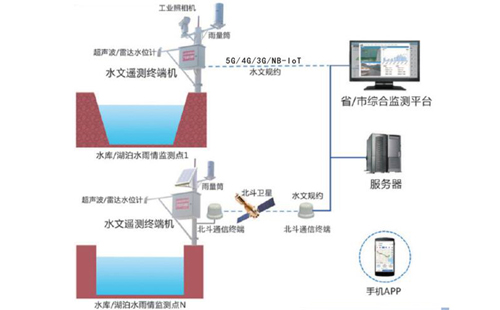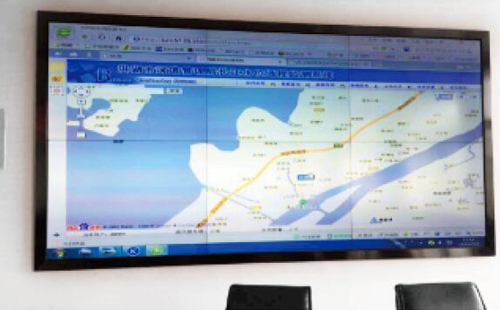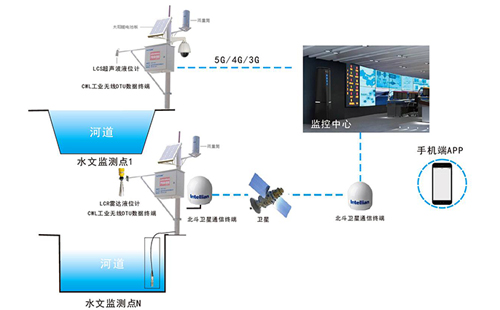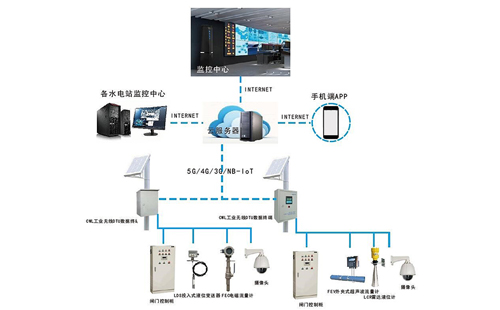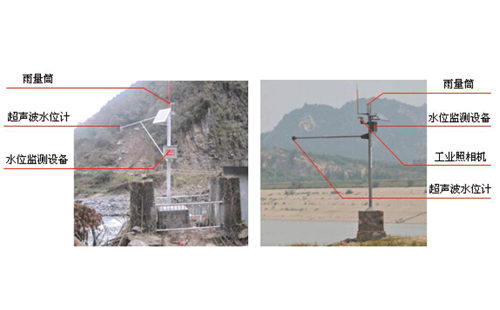Overview:
The online monitoring system accurately,timely,and comprehensively reflects the current status and development trends of water quality.It provides a scientific basis for water environment management,pollution source control,and environmental planning.It is widely used in monitoring scenarios such as river chief system river section monitoring,river outfall monitoring,and drainage pipe network water quality monitoring.
System Structure:
Depending on project requirements,various water quality auto-analyzers can be configured,such as conventional five parameters(water temperature,pH,dissolved oxygen,conductivity,turbidity),ammonia nitrogen,permanganate index,total phosphorus,and total nitrogen.Water quality automatic monitoring stations typically adopt a monitoring frequency of sampling and analysis once every 4 hours.

System Functions:
Remotely manage all monitoring points,featuring monitoring and anti-theft functions for connected equipment and sensors.
Collect monitoring data sent from each station,analyze the data,and store it in a database for querying.Monitored data includes values for turbidity,total phosphorus,total nitrogen,color,permanganate index,and COD.
Publish basic information,real-time data,historical data,statistical data,analysis data,reports,and charts of monitoring points via a web application system.
Display the distribution locations of monitoring points on a map divided by region,enabling quick access to monitoring data and alert statuses of supervised points within the jurisdiction.
Provide water quality exceedance alerts,pinpointing the specific numerical values of exceeded water quality indicators.
Offer comprehensive reporting functions,including year-by-month,year-by-day,month-by-day,and daily reports.Automatically calculate extreme values(maximum,minimum)and averages.
Support querying and exporting data to Excel documents,facilitating secondary editing and printing by users.








